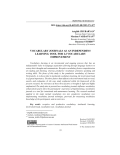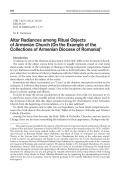Vocabulary learning is an incremental and ongoing process that has an indispensable value in language acquisition allowing foreign language learners to convey their thoughts and communicate. Receptive vocabulary fosters comprehension of reading and listening, whereas productive vocabulary promotes speaking and writing skills. The focus of this study is the productive vocabulary of learners. Particularly, it is shown that in incidental vocabulary learning, the involvement load is of great importance. The three factors that influence the involvement load are need, search, and evaluation. In the case study conducted within the framework of the present research, the relevance of these three factors is brought to light and highly emphasized. The study aims to present how vocabulary journals influence vocabulary enhancement and to show the participants’ experience of implementing a vocabulary journal as a tool for intentional and autonomous learning. The research methods applied in the study include vocabulary size test, productive vocabulary test, implementing vocabulary journal technique, post-tests for measuring vocabulary knowledge of the participants, and an interview.
Сияние - это один из элементов украшения Священного Стола, характерный исключительно для Армянской Апостольской церкви. Оно сформировалось под влиянием западной церковной традиции, возможно, после 17 века, и использовалось в качестве примера в западной дарохранительнице или остенсориуме. Тот факт, что армянская церковь приняла этот предмет гораздо позже, свидетельствует о его не ритуальном назначении. Сияние обычно представляет собой круглые или овальные металлические композиции, обрамленные лучами, украшенные с одной или с обеих сторон. В центре обычно изображается либо Распятие Христа, либо Мадонна с младенцем. Предметы, сохранившиеся в Румынии, в основном местного происхождения и были созданы в 19 веке. Очевидно, что на дизайн этих предметов оказала влияние местная культура, характерными чертами которой, в частности, являются сцены, украшающие предметы, а также их иконография. В значительной степени мастера остаются неизвестными, но нельзя отрицать, что все образцы были созданы для армянских меценатов.

